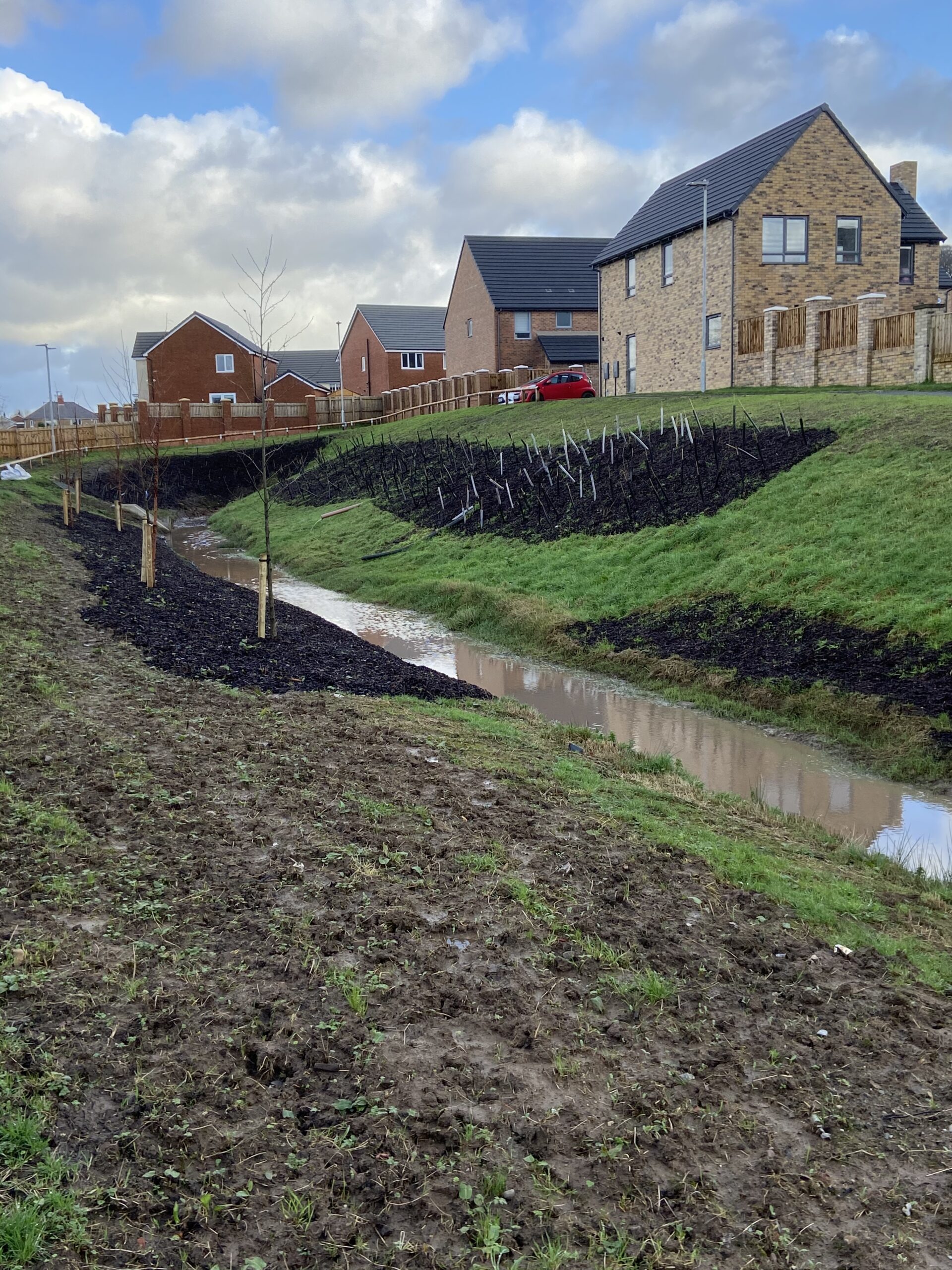This blog has been written by a member of the Newground Flood Team.
SuDS are an important part of green infrastructure, offering a more natural approach to managing surface water flood risk, but they can also be used to ease demand on water supplies in urban areas.
With the population in England set to rise by an estimated 8.7 million by 2050, it is critical that enough homes are built with adequate and sustainable drainage to reduce the demand on water supplies and to reduce the risk of flooding. Currently around 3 million properties in England are at risk of surface water flooding, which is more than those at risk of flooding from rivers and the sea.

Image: The Flood Hub
It is important to think about where the rainwater that falls on your property ends up, for example, if your property or business premises has a lot of impermeable paving or roof area, water will run off this and into drains rather than being absorbed into the ground, as it would naturally.
Over the last 10 years in England 22,000 hectares of green space has been lost and replaced with hard surfaces, increasing pressure on sewers and drainage systems. Both homeowners and business owners can retrofit SuDS into their properties, putting less strain on drainage systems and water supplies and reducing the property’s flood risk. However, it is a lot easier to implement SuDS during the design stage of a development and following planning policy released in 2015, SuDS should now be provided on all developments (residential, non-residential or mixed).
With record breaking temperatures seemingly being set every year, we are also seeing environmental incidents such as flash flooding, low river flows, low reservoir levels, algal blooms and moorland fires, becoming more common. In addition, as a result of future climate change, experts are predicting hotter, drier summers, therefore, it is important that we all do as much as we can to reduce demand on water supplies.
SuDS deal with water where it falls (the source) and reduce the volume of runoff from a particular site by intercepting water and increasing storage and infiltration. Households and businesses in the UK can do more to reduce the demand for fresh water and one option is to install SuDS which would allow rainwater to be harvested all year round, such as water butts. Rainfall can be collected all year round and be used during the summer months to reduce the reliance on drinking water supplies. The water collected can be used for things like toilet flushing, irrigation, watering plants, and washing windows or cars. Not only are SuDS better for the environment in terms of water availability and usage, they can also help to reduce water bills and the risk of flooding in the wetter months.
Some examples of source control SuDS include green roofs, rain gardens, detention basins and permeable surfaces.
For more information on SuDS and the different types, please download our SuDS Booklet here.
Sources used: Environment Agency, Sustainable Business Forum – Bricks and Water Policy,